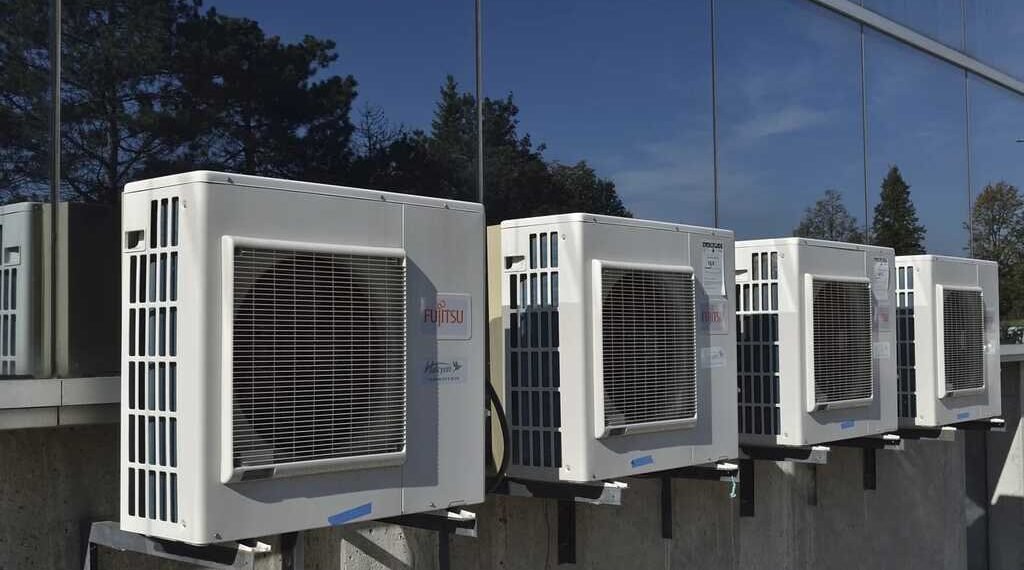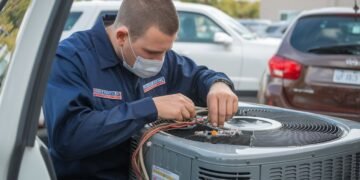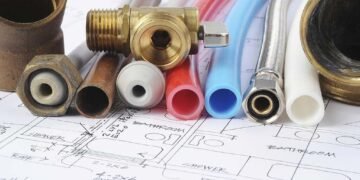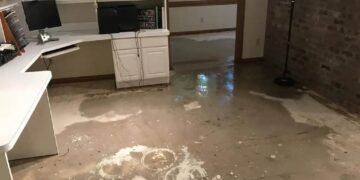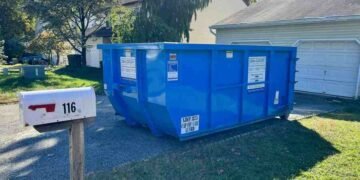As one of the biggest contributors to home energy bills and comfort, ensuring your HVAC (heating, ventilation, and air conditioning) system runs efficiently through proactive maintenance and timely repairs when issues emerge is fundamental. This guide provides homeowners with key information detailing common HVAC components, outlining maintenance best practices, maximizing performance and lifespan, and describing scenarios indicative of professional service needs. Investing a little consistently in HVAC upkeep saves thousands long-term.
Understanding Your HVAC System
Familiarizing yourself with standard HVAC parts assists in better comprehension of how components coordinate heating and cooling cycles:
- Air Handler – Metal box containing a blower, cooling coils, and heating elements that channels heated/cooled air throughout homes via ductwork branching to vents. Filters inside air handlers trap dust and allergens from circulation.
- Furnace – Applies direct heat by burning gas or heating electric coils to warm air moved by blowers from cold return ducts through hot supply ducts distributing warmth house-wide during winter. Newer models feature integrated air conditioning parts.
- Condenser Unit – Outdoor unit holding vital air conditioning apparatus like compressors and condenser coils that remove heat from refrigerants, converting hot gases into cold liquids, transported indoors for cooling, then recycled as gas to repeat cycles.
- Thermostat – Mounted hardware with digital controls monitoring interior temperatures and then signaling HVAC systems to activate heating/cooling cycles maintaining set comfort ranges in homes. Programming maximizes efficiency.
- Ductwork – cylindrical sheet metal tubing networks transporting heated/cooled air from HVAC components to room vents house-wide. Proper sealing prevents leaks compromising airflow.
Regular Maintenance Importance
Like changing car oil routinely prevents larger engine damage, ongoing HVAC maintenance sustains healthy performance preventing pricey repairs from neglected issues:
- Improves Efficiency – Clean components consume less energy executing heating/cooling dirty parts overworking trying to compensate for grime buildup leading to higher bills.
- Extends Lifespan – Servicing, debris removal, and washing prolongs longevity of HVAC investments from the 5-10 year range up to 15-20 years, preventing premature breakdowns.
- Enhances Comfort – Well-maintained equipment reacts faster and sustains programmed temperatures better without wide fluctuations in home environments.
- Improves Air Quality – Replacing dirty filters traps allergens like dust regularly, ensuring cleaner indoor air circulation and helping those with allergies or asthma breathe more easily.
- Reduces Breakdown Risks – Technicians spot minor problems early before causing operation failure. Diagnosing issues promptly also circumvents pricey emergency repairs.
Essential Maintenance Tasks
Adhering to these fundamental HVAC maintenance practices maximizes enjoyment from home temperature control systems:
- Replace Air Filters – Swap disposable filters inside air handler units every 30-90 days, removing trapped particulates and allowing proper airflow. Electrostatic pleated designs trap more contaminants.
- Schedule Professional Maintenance – Technicians annually inspect entire HVAC systems, spotting issues early and performing vital tasks you can’t do, like coil cleaning to boost functionality.
- Clean Outdoor Unit – Gently hose down external condenser units whenever visibly dirty to wash away sticks, leaves, or debris that could obstruct airflow over critical parts. Keep vegetation trimmed back.
- Program Thermostats – Set programmable thermostats at conservative temperatures when away, saving energy. Strategies include lowering heat to 2F during work hours or raising cooled temperatures to 7-10F while vacationing.
- Maintain Proper Humidity – Ideal indoor humidity ranging 35-55% prevents moisture, contributing to the growth of hazardous molds/mildew behind walls while also stopping dry air from aggravating respiratory conditions. Install whole-home humidifiers/dehumidifiers if lacking.
Causes and Solutions for HVAC Airflow Problems
Inadequate airflow prevents attaining comfortable temperatures quickly. Assess common obstruction causes:
1. Blocked Vents/Registers – Clear furniture, rugs, drapes, or other objects blocking vents preventing air circulation into living spaces. Equal distribution cools/heats efficiently.
2. Oversized HVAC Unit – Systems exceeding the required capacity struggle to maintain proper moisture removal and airflow velocity. Right-sized models run more efficiently with balanced air movement.
3. Clogged Air Filters – Air restricted through filthy filters must work harder to circulate reduced volumes. Swap filters each season as preventative maintenance.
4. Blocked/Leaky Ducts – Various obstructions like crushed/disconnected ducts, accumulation of dust, mold, or pests leaking air all decrease delivered airflow. Inspect/seal ducts during professional cleans.
5. Dirty AC Coils – External debris or grime buildup on condenser coils necessitates cleaning so refrigerant gases can dissipate heat properly when circulating. Hoses safely blast away accumulated dirt.
6. Too Few Return Air Vents – Every room needs properly sized return air vents drawing interior air for filtration and temperature adjustments. Added vents improve airflow distribution house-wide.
7. AC Blower Motor Problems – Faulty bearings or electrical issues running blowers can disrupt motion speed moving air through systems. HVAC technicians troubleshoot puzzling changes.
8. Undersized/Oversized Ductwork – Improperly sized duct diameters and layouts misalign with equipment capacities, preventing comfortable air volumes from reaching distant rooms. Professionals examine airflow delivery and duct integrity, checking for leaks and reducing efficiency.
9. Low Refrigerant Levels – Air conditioning refrigerant can slowly leak from coils requiring topping off from professionals. Lower quantities cripple cooling capabilities so schedule inspections if unable.
10. Faulty Thermostats – Outdated or improperly programmed thermostat settings switch heating/cooling modes too frequently before reaching target temperatures. Replaced digital models allow smarter automation and remote accessibility.
These examples underscore the importance of annual HVAC system repair and maintenance to verify all components interact correctly and that air flows freely. Technicians also check refrigerant levels, electrical connections, and programming during appointments.
When Professional Help is Needed
While preventative maintenance minimizes HVAC disruptions, unexpected failures still occasionally occur. Contact certified HVAC repair professionals immediately if experiencing:
- Unusual Noise – Squealing, grinding, or rattling coming from units likely indicates damaged fan bearings or failing components needing replacement before catastrophic breakdowns.
- Uneven Temperature Distribution – If certain rooms starkly deviate from programmed thermostat settings enough to become uncomfortable, underlying duct leaks or obstructed registers likely channel airflow inefficiently.
- Sudden Surges in Energy Bills – Prolonged runtime trying to overcome declining efficiency drains substantial energy, demanding an investigation of dirty filters, freon leaks, or another underlying breakdown, making usage spike exceed average ranges.
- Frequent Emergency Shutdowns – Units abruptly powering down with little warning often have underlying electrical issues needing assessment to uncover causes and implement fixes preventing recurrence once power cycles restore operation.
While perfectly operating HVAC systems easily maintain steady, even temperatures throughout home spaces, disruptive symptoms above signal larger issues warranting attention. Seeking professional opinions quickly helps regain comfortable environments protecting people, pets, and property. Don’t delay.
Conclusion
HVAC systems contain mechanical, electrical, and control components interacting precisely to maintain indoor environmental comfort. Regular maintenance and periodic repairs by qualified professionals ensure these complex systems continue delivering optimized heating and cooling performance while maintaining indoor air quality for several years. Use this guide to understand your HVAC components, schedule maintenance tasks like professional servicing, filter changes, etc., and recognize common airflow issues. Continued maintenance minimizes major repairs down the line, enhancing comfort and savings.

